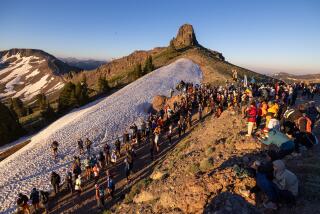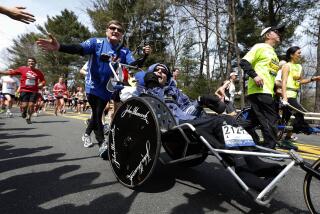Cyclists Begin the Race Across America This Morning
This morning at 9 o’clock, 29 well-conditioned, ultra-marathon cyclists will convene on the Huntington Beach Pier for the start of the fourth Race Across America. Between 9 and 10 days and 3,120.2 miles later, if things go as expected, fewer than 10 of them will reach the finish line on the Boardwalk in Atlantic City.
The remainder of the competitors will have pulled out of the race somewhere along the way because of fatigue, injury or mechanical problems with their bikes, or they will have been disqualified if they are 36 hours or more behind the leader after reaching the Mississippi River.
There is little financial motivation involved. Except for the nominal $5,000 each that will go to the winning man and woman and a few prizes provided by sponsors that will go to the other top finishers, the participants get no other renumeration.
So why would anyone in his right mind want to ride in the Race Across America, a punishing test of physical and mental endurance?
“Since this race is really just short of being the Bataan Death March, I can understand why someone would wonder why anyone would subject themselves to the longest, toughest race in America,” said Pete van Nuys, race spokesperson. “Why they do it is something I don’t think you can explain in words.”
What it seems to come down to is the challenge. These cyclists have trained a year for this race, competed in numerous qualifying races and generally given up almost all other forms of recreation so that they could, if not win the race, at least finish it.
The indescribable satisfaction that comes with conquering the terrain of the United States on a bike is what motivates the ultra-marathoners to survive the oppressive heat, cold, rain, hills, mountains, unpaved roads and heavy traffic they will encounter.
And the motivation is strong. To get to Atlantic City, or even part of the way there, there are a host of injuries the Race Across America riders must condition themselves to endure.
Aching joints, sore muscles, saddle sores and nerve-damaged hands suffered from the pounding of pavement felt through the handlebars of their expensive, light-weight bikes often continue to plague the riders for months after the race.
Luckily, the feeling of disorientation and hallucinations most riders experience go away after they catch up on their sleep.
During the race, most riders average only about two hours sleep per day. In order to keep them awake and semi-alert while riding, support crews, made up of relatives and friends, follow each rider in motor homes or cars and sing to them, read to them or simply try to cheer them up when the cyclists’ will to continue is eroding.
Each day, the riders make several brief stops, which are similar to pit stops made by an Indy racer. During these brief respites, the riders go the bathroom, hose themselves off, get a quick massage and grab something to eat. The key is to stay on the bike as long as possible, though, so frequently the cyclists eat while riding.
The father of the Race Across America is John Marino, a former ultra-marathoner himself.
When a potential career as a baseball player was cut short because of a back injury, Marino turned to endurance cycling as his sport of choice. He quit his job as a teacher in 1976 to devote himself full time to training, and, in 1978, he set a transcontinental record by biking across the country in 13 days, 1 hour and 20 minutes.
Two years later, he beat his own record and became something of a celebrity when his quest was documented in a motivational film, “Psychling,” and in a book he wrote himself.
In 1982, Marino organized the first Race Across America, and he’s continued in the capacity of race organizer since.
The Race has been gaining more and more media attention, thanks in part because ABC’s Wide World of Sports has shown it on a tape-delayed basis since its inception. Soon, Marino hopes, major sponsors will get more involved and he will be allowed to start competing again himself.
This is something of a transition year for the Race Across America. Jonathan Boyer, a cyclist with European racing experience such as the Tour de France, has entered. He is the first professional cyclist to enter the Race Across America, and if he does well, other professionals will likely follow his lead next year.
And while it will become more difficult for amateurs to remain competitive, the professionals will bring even more public and sponsor support.
The favorites to win the men’s race are Lon Haldeman, who won the 1983 event, Michael Secrest, who finished second last year, and Michael Shermer, who finished fifth last year. Pete Penseyres, who won last year’s race in record time, will not compete. He will, however, be a member of the support team for his brother, Jim, who will be trying to keep the Race Across America championship in the family.
Three women, Susan Notorangelo Haldeman, Shelby Hayden Clifton and Elaine Mariolle, are entered.
More to Read
Sign up for Essential California
The most important California stories and recommendations in your inbox every morning.
You may occasionally receive promotional content from the Los Angeles Times.










